This article needs additional citations for verification .(July 2017) |
John William Carnegie Kirk (1878-1962) was a British Army officer, and botanist working in South Africa and author of A British Garden Flora.
This article needs additional citations for verification .(July 2017) |
John William Carnegie Kirk (1878-1962) was a British Army officer, and botanist working in South Africa and author of A British Garden Flora.
Kirk was commissioned a second lieutenant in The Duke of Cornwall's Light Infantry on 18 October 1899, and promoted to lieutenant on 16 February 1901. [1] In August 1902 he was seconded for service under the Foreign Office, [2] and transferred to the 3rd (East Africa) Battalion of the King's African Rifles.

During his time in British Somaliland he recorded many poems and translated accounts and stories in the Somali language and compiled them into a book. One of such poems was about a visit from the powerful Sultan Nur Ahmed Aman to the Habr Je'lo. The Habr Je'lo recited this geeraar praising Sultan Nur. [3]
Hali waa iga salaan | First we salute thee |
| —Habr Jelo Geeraar [4] |
A Grammar of the Somali Language: With Examples in Prose and Verse 1905
The Habar Yoonis alternatively spelled as Habr Yunis is a major clan part of the wider Isaaq clan. As descendants of Ismail bin Sheikh Isaaq, its members form a part of the wider Habar Magaadle confederation which constitutes the largest sub-clan of the Isaaq.

The Isaaq is a major Somali clan. It is one of the largest Somali clan families in the Horn of Africa, with a large and densely populated traditional territory.
The Habr Garhajis also contemporarily known as the Garhajis is a major clan of the wider Isaaq clan family. They are the traditional holders of the Isaaq Sultanate and Habr Yunis Sultanate since the 18th century. As descendants of Ismail bin Sheikh Isaaq, its members form a part of the Habar Magaadle confederation, and they constitute one of the largest sub-clans of the Isaaq. The Garhajis are divided into two major sub-clans: the Habr Yunis and Eidagale. They are traditionally nomadic pastoralists, merchants and skilled poets.
The Yibir, also referred to as the Yibbir, the Yebir, or the Yibro, are a caste of Somali people. They have traditionally been endogamous. Their hereditary occupations have been magic making, leather work, the dispensing of traditional medicine and the making of amulets. They belong to the Sab clan and sometimes referred to as a minority clan, they perform menial tasks.
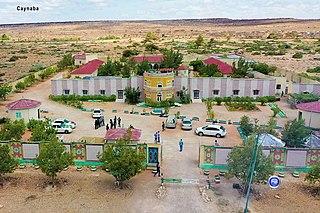
Aynaba, also spelt Ainabo, Ainaba or Aynabo is a major town in western Sool region of Somaliland as well as the administrative seat of the Aynaba District.

The Dervish Movement was an armed resistance movement between 1899 and 1920, which was led by the Salihiyya Sufi Muslim poet and militant leader Mohammed Abdullah Hassan, also known as Sayyid Mohamed, who called for independence from the British and Italian colonisers and for the defeat of Ethiopian forces. The Dervish movement aimed to remove the British and Italian influence from the region and restore an "Islamic system of governance with a Sufi doctrine as its foundation", according to Mohamed-Rahis Hasan and Salada Robleh.
Garad is a term used to refer to a king, Sultan or regional administrator. It was used primarily by Muslims in the Horn of Africa that were associated with Islamic states, most notably the Adal Sultanate.
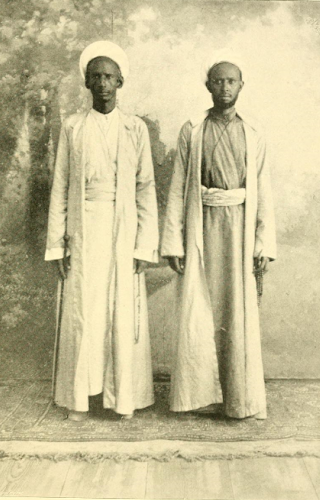
Suudi Shabeele Omar, more commonly known as Haji Sudi was one of the leaders behind the Somali Dervish movement. He was also the movement's right-hand man and chief lieutenant till its demise in 1920. He is described as the Mullah's right hand in the earlier days of his rise. He hailed from the Adan Madoba sub-clan of the Habr Je'lo clan.
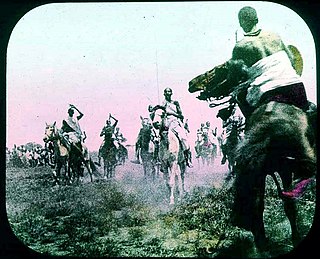
SultanNur Ahmed Aman, was a learned religious leader and the 5th Sultan of the Habr Yunis Sultanate and later also one of the leaders behind the Somali Dervish movement and revolt (1899–1920). He was the principal agitator rallying the followers of the Kob Fardod Tariqa behind his anti-French Roman Catholic Mission campaign that would become the cause of the Dervish uprising. He assisted in assembling men and arms and hosted the revolting tribesmen in his quarter at Burao in August 1899, declaring the Dervish rebellion. He fought and led the war throughout the years 1899–1904. He and his brother Geleh Ahmed were the main signatories of the Dervish peace treaty with the British, Ethiopians and Italian colonial powers on March 5, 1905, known as the Ilig Treaty or the Pestalozza agreement. Sultan Nur is entombed in a white-domed shrine in Taleh, the location of the largest Dervish forts and the capital of the Dervish from 1912 to 1920, a testimony to his contribution in creating the movement.

The Habr Je'lo, Arabic: هبر جعلو, Full Name: Mūsa ibn ash-Shaykh Isḥāq ibn Aḥmad, historically known as the Habr Toljaala is a major Northern Somali clan of the wider Isaaq family. Its members form the confederation along with the Ibran, Sanbuur and Tolje’lo.
Sultan Hersi Aman was a Somali ruler. He was the 3rd Sultan of the Habr Yunis Sultanate.

The Mohamed Abokor is a Somali clan, and a major sub-division of the muuse sh isxaaq clan of the Isaaq.

Salaan Mahamud Hirsi, better known as Salaan Carrabey, was a famous poet from the Adan Madoba sub-division of the Habr Je'lo Isaaq clan.
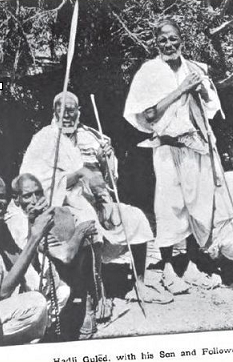
Guled Haji was a Somali sage and the Aqil or leader of the Baha Sugule branch of the powerful Rer Ainanshe Habr Yunis. The Rer Ainashe are the traditional rulers of the Habr Yunis Sultanate.
Sultan Madar Hersi Deria was a Somali ruler and the 7th Sultan of the Habr Yunis Sultanate.
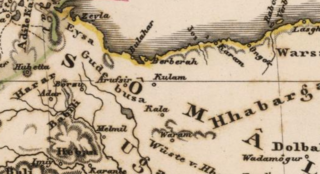
The Habr Yunis Sultanate was a Somali kingdom that ruled parts of the Horn of Africa during the 18th century. It spanned the territories of the Habr Yunis clan which is part of the wider Isaaq in modern day Somaliland and Ethiopia. The sultanate was governed by the Rer Ainanshe branch of the Habr Yunis clan.

The Reer Caynaashe also spelled Reer Caynaanshe are a royal Somali clan and were the dynastic rulers of the Habr Yunis Sultanate. They divide into 17 major sub-clans that together form the Baha Ainanshe and Rer Sugulle, from the latter descend the rulers of the Habr Yunis Sultanate. They inhabit the Togdheer and Maroodi Jeex regions of Somaliland and the Daroor, Danot and Misraq Gashamo regions of Ethiopia

Haji Mohamed Bullaleh commonly known as Haji Warabe was an early 20th century Akil (chief) of the Habr Yunis Rer Ainanshe.

Abdallah Mohamed Shihiri was a senior Khusuusi member of the Somali Dervish movement and was part of the movement since its inception. He was long time companion and a childhood friend of Mohamed Abdullah Hassan and notable weapons smuggler. He belonged to the Adan Madoba sub-clan of the Habr Je'lo clan of the Isaaq clan family.

The 1945 Sheikh Bashir Rebellion was a rebellion waged by tribesmen of the Habr Je'lo clan in the cities of Burao and Erigavo in the former British Somaliland colony and protectorate against British authorities in July 1945 led by Sheikh Bashir, a Somali religious leader. This rebellion occurred two months after the end of the Second World War in Europe, and post-war conditions, and the impending collapse of the British Empire, may have been the reasons for the rebellion in the first place.